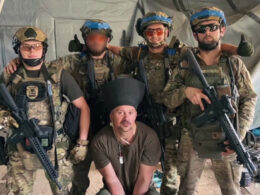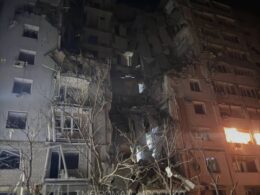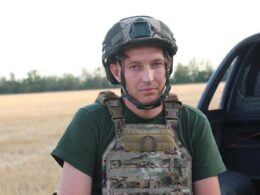The Institute for the Study of War (ISW) reported on 9 May that Russian forces have significantly increased the rate of ground attacks in eastern Ukraine over the past month.
According to the ISW, this likely reflects current battlefield conditions and the intent of the Russian military command to secure gains before the arrival of Western military aid to the frontlines.
Ukrainian Khortytsia Group of Forces Spokesperson Lieutenant Colonel Nazar Voloshyn stated on 9 May that the number of combat engagements increased significantly from 84 on 8 May to 146 on 9 May across the whole frontline.
He said that most of the fighting occurred in the area of responsibility of the Khortytsia Group, which covers the area from Kharkiv Oblast down to the Donetsk-Zaporizhzhia Oblast border area.
The UK Ministry of Defense (MoD) reported that the rate of Russian attacks increased by 17 percent between March and April 2024 and that over 75 percent of reported ground attacks occurred in the Chasiv Yar, Avdiivka, and Marinka directions.
The UK MoD also noted that the number of Russian attacks near Chasiv Yar increased by 200 percent between March and April.
The Ukrainian military has reported before that the Russian military has intensified its forces on the frontline, especially in the Avdiivka direction in Donetsk oblast, as Russia aimed to seize a strategic city of Chasiv Yar before Russia’s Victory Day on 9 May.
Voloshyn said that the current intensification of Russian attacks results from the soil drying out after the spring mud season, facilitating more rapid mechanized maneuver. He also notes that Russian forces are trying to take advantage of Ukraine's relative weakness while it awaits the arrival of Western aid.
ISW continues to assess that Russian forces will maintain the high rate of attacks across eastern Ukraine in order to make gains before the arrival of Western aid in Ukraine
, which will likely stymie Russian forces' ability to maintain the high rate of attacks and tactical gains that they are currently able to pursue.
Ukrainian President Volodymyr Zelenskyy also said on 9 May during a meeting with European Parliament Head Roberta Mestola that the arrival of Western aid to Ukrainian frontline units will allow Ukrainian forces to blunt Russia's initiative in eastern Ukraine.
The deputy head of Ukraine’s military intelligence agency HUR, Vadym Skibitsky, said in the interview with The Economist that Russian forces are preparing a three-layered strategy assault on Ukraine soon.
It involves a phased offensive campaign to first seize full control of two eastern provinces before potentially turning toward assaults on northeastern Kharkiv and Sumy, coupled with disruptive disinformation efforts to undermine Ukraine’s mobilization, and a campaign to isolate Ukraine internationally.
Other takeaways from the report:
- Russian Ministry of Foreign Affairs (MFA) Spokesperson Maria Zakharova claimed that the Moldovan government is engaged in a Nazi-like "genocide" in Moldova — a notable inflection in Kremlin officials' rhetoric about Moldova that is likely meant set conditions for a Russian effort to secure control over Moldova and not just some of its regions.
- Russian border guards are withdrawing from much of Armenia as Armenian Prime Minister Nikol Pashinyan continues to face domestic backlash for decisions regarding Nagorno-Karabakh.
- Ukraine's Security Service (SBU) conducted long-range drone strikes against Russian oil depots and refinery infrastructure in Krasnodar Krai and the Republic of Bashkortostan on 9 May.
- Russian forces recently made confirmed advances near Avdiivka and Donetsk City.
- Russian forces continue to struggle with discipline in their ranks, with some Russian soldiers reportedly killing other members of their units.





